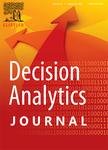版权所有:内蒙古大学图书馆 技术提供:维普资讯• 智图
内蒙古自治区呼和浩特市赛罕区大学西街235号 邮编: 010021

作者机构:School of Engineering and Computing University of Gloucestershire United Kingdom Data Science AI & Modelling Centre (DAIM) University of Hull United Kingdom School of Pharmacy & Biomedical Sciences University of Portsmouth United Kingdom Department of Computing University of the West of Scotland United Kingdom
出 版 物:《Decision Analytics Journal》 (Decis. Anal. J.)
年 卷 期:2024年第11卷
主 题:Convolutional Neural Network DenseNet201 Image classification InceptionV3 Long COVID Machine Learning Post-COVID syndrome ResNet50 Transfer Learning Visual Geometry Group Xception
摘 要:Machine intelligence has the potential to play a significant role in diagnosing, managing, and guiding the treatment of disease, which supports the rising demands on healthcare to provide rapid and accurate interpretation of clinical data. The global pandemic caused by the Severe Acute Respiratory Syndrome Coronavirus (SARSCoV-2) exposed a need for rapid clinical data interpretation in response to an unprecedented burden on the healthcare system. A new healthcare challenge has arisen – post-COVID syndrome or ‘long COVID’. Symptoms of the post-COVID syndrome can persist for months following infection with SARS-CoV-2, often characterised by fatigue, breathlessness, dizziness, and pain. Despite this additional healthcare burden, no tests can diagnose, monitor, or determine the efficacy of treatments/interventions to support recovery. In this paper, an array of machine-learning algorithms is trained to evaluate and detect COVID-19-associated changes to lung tissue from X-ray images. X-ray images are classified from open sources into three categories: COVID-19 patients, patients with pneumonia, and unaffected otherwise healthy individuals using existing Machine Learning (ML) and pre-trained deep learning models. Prioritising models with the fewest false positives and false negatives assessed the performance of different models in detecting COVID-19-associated lung tissue. In addition, image pre-processing, data augmentation, and hyperparameter tuning are used to achieve the best accuracy in the models. Different ML models, including K Nearest Neighbour (KNN), and decision trees (DT), as well as transfer learning models such as Convolutional Neural Network (CNN), Visual Geometry Group (VGG-16, VGG-19), ResNet50, DenseNet201, Xception, and InceptionV3, were tested to evaluate the performance of these models for X-ray images classification. The comparative analysis indicates that VGG-19 with augmentation performed best among the ten algorithms with a training accuracy of 99